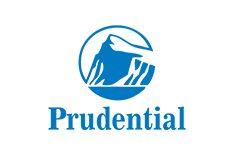
The need for hospitalization is often unexpected and can be expensive. Such unplanned expenses could put emotional and financial stress on you and your loved ones. Even with a good medical plan, a short hospital stay could add up to substantial out-of-pocket costs. A hospital indemnity plan can complement other medical insurance – paying for costs outside the primary health plan coverage. Even with a medical plan, many individuals may still be responsible for paying deductibles, co-pays, and other expenses due to accidents or sickness. AFE’s Group Hospital Indemnity Insurance, issued by The Prudential Insurance Company of America (Prudential) can help members protect their finances so they can focus on getting well. The cash benefits can be used for out-of-pocket costs which can be medical or non-medical expenses. The insured can choose to pay for copays, deductibles, coinsurance or living expenses.
Medicare Advantage plans and maximum out-of-pocket costs
A Hospital Indemnity plan for people on Medicare can cover the out-of-pocket expenses (plan co-pays) for hospital confinements on a Medicare Advantage plan. Medicare Advantage plan typically has co-pays or coinsurance for medical care. The Centers for Medicare & Medicaid Services (CMS) sets a maximum out-of-pocket annual limit for Medicare Advantage plans. They can have lower limits at their discretion, but their limits can’t be higher than the CMS maximum. The CMS maximum amount (and your plan’s maximum) can change from year to year.
If you’re considering your Medicare coverage options, you might be thinking about your out-of-pocket costs. It may surprise you that there is no annual out-of-pocket limit under Original Medicare, Part A and Part B. All Medicare Advantage plans have out-of-pocket maximums to protect you from high costs. Here’s what you should know about your out-of-pocket costs with Medicare Advantage plans.


Does Medicare have a maximum out-of-pocket limit?
Medicare Advantage plans are offered by private insurance companies that contract with Medicare, and after they meet the Medicare minimum requirements for coverage, these companies have some flexibility in setting their premiums, benefits, and cost-sharing structures. Every Medicare Advantage plan has an annual out-of-pocket maximum amount. This amount cannot exceed a government-mandated amount that may change every year.
Do Medicare Advantage plans pay 100% of my medical costs?
Medicare Advantage plans don’t pay 100% of your medical costs. Like most health insurance, Medicare Advantage plans have a “cost-sharing” structure for many services. If your plan covers the service, it’ll usually pay most of the costs and charge you a copayment or coinsurance amount. A yearly deductible may apply. You might not be charged at all for some preventive services. Costs vary among plans.
We have provided a brief overview of this product/service. AFE Members receive specific information as to how they can access more detail.